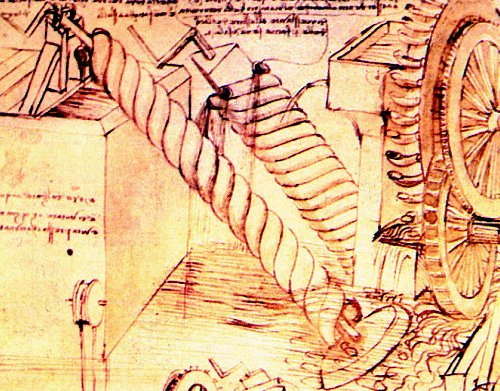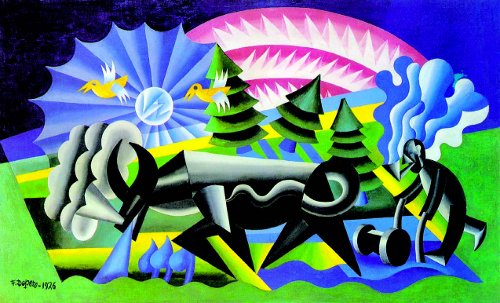Mechanics and Machines
In ancient times, mechanics was practical and was used to build and operate machines. It is easy to forget this when you are studying formulas and equations.
The Ancient Greeks knew a lot about the geometric laws of equilibrium. They studied them so they could use the five simple machines (the lever, pulley, wedge, screw and inclined plane).
In the middle ages scientists followed the traditions of Aristotle and so studies of machines, like all man-made (or artificial) objects, were separate from the studies of nature. People thought that art imitated nature but that art could not be perfect like nature.
The mathematical study of equilibrium began again at the start of the modern era. This lead to the birth of a new idea; natural phenomena are not separate from artificial phenomena. Scientists did not consider their movement and characteristics to be different anymore. This is how physics and mechanics were discovered. Scientists decided that we could only understand nature if we considered it to be a machine.
This point of view is called mechanical philosophy and even Newton subscribed to it. His work was very influential in the development of modern science, even after his death and until the second half of the 19th century. After this, new observations of optical, electrical and magnetic phenomenon meant that scientific theories needed to be completely changed.

A drawing of Archimedes’ screws. Machines that transported water from a low position to a higher
one. (Codex Atlanticus)

Mechanical philosophy was represented in modern times by Futurist artists. Here we can see L’aratura by Fortunato Depero, painted in 1926. (Turin, GAM, Galleria Civica d’Arte Moderna e Contemporanea)
Minidictionary
Five simple machines = Cinque macchine semplici
To imitate = Imitare
Inclined plane = Piano inclinato
Laws of equilibrium = Leggi dell’equilibrio
Lever = Leva
Mechanical philosophy = Meccanicismo
Mechanics = Meccanica
Pulley = Carrucola
Screw = Vite
Subscribed to = Aderire a
Wedge = Cuneo

